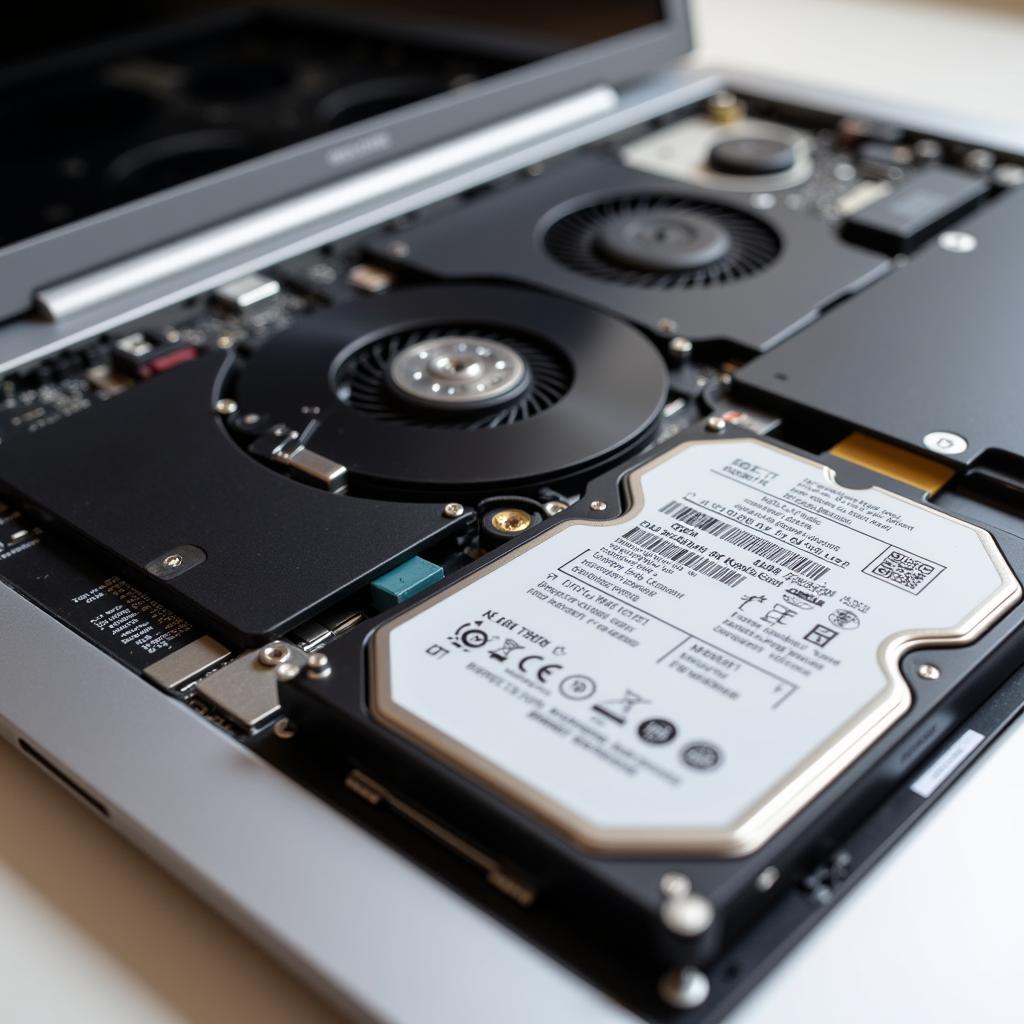Mac computers are renowned for their sleek design and powerful performance. However, even the most sophisticated technology can occasionally be a source of unwanted noise. If your Mac is making strange sounds or has become unusually loud, you’re not alone. This comprehensive guide will delve into the common causes of Mac Noise Complaints and provide practical solutions to help you restore peace and quiet to your workspace.
Identifying the Source of the Noise
Before attempting any troubleshooting steps, it’s crucial to identify the source of the noise accurately. Different components within your Mac can produce distinct sounds, indicating specific problems.
- Fans: One of the most frequent culprits of Mac noise is the cooling fan. Over time, dust and debris can accumulate in the fan blades, causing them to spin unevenly and generate a whirring or humming noise.
- Hard Drive: A failing or overworked hard drive can produce a clicking, grinding, or buzzing sound. This is often a sign of a serious issue that requires immediate attention.
- Optical Drive: While less common in modern Macs, the optical drive can make noise when reading or writing discs. If you hear a spinning or scraping sound, it could indicate a problem with the drive or the disc itself.
- Speakers: Distorted or crackling audio from your Mac’s speakers can be caused by various factors, such as software glitches, loose connections, or blown-out speakers.
 Mac Internal Components
Mac Internal Components
Troubleshooting Common Mac Noise Issues
Once you’ve identified the potential source of the noise, you can try the following troubleshooting steps:
1. Check for Software Updates
Sometimes, software glitches can cause your Mac’s fans to run at higher speeds than necessary, resulting in excessive noise. Ensure that your macOS is up to date, as software updates often include performance improvements and bug fixes that can resolve these issues.
2. Monitor CPU Usage
If your Mac is consistently working hard, the CPU will generate more heat, causing the fans to spin faster and louder. Use the Activity Monitor app to identify any applications consuming excessive CPU resources and consider closing or optimizing them.
3. Clean Your Mac
Dust and debris can hinder airflow within your Mac, leading to overheating and increased fan noise. Use compressed air to gently clean the vents and keyboard, and consider using a microfiber cloth to wipe down the exterior.
4. Reset the SMC
The System Management Controller (SMC) is responsible for various hardware functions, including fan control. Resetting the SMC can resolve many hardware-related issues, including excessive fan noise. The method for resetting the SMC varies depending on your Mac model, so refer to Apple’s support website for specific instructions.
5. Consider Hardware Upgrades
If your Mac is still noisy after trying the above steps, it might be time to consider hardware upgrades. Upgrading to a solid-state drive (SSD) can significantly reduce noise and improve overall performance. Additionally, if your Mac has an older hard drive, replacing it with a new one can resolve clicking or grinding sounds.
When to Seek Professional Help
While some Mac noise issues can be resolved with basic troubleshooting, others require professional assistance. If you experience any of the following, it’s essential to contact Apple Support or an authorized service provider:
- Loud and persistent noises that persist even after troubleshooting
- Clicking, grinding, or buzzing sounds from the hard drive
- Distorted or crackling audio from the speakers that doesn’t improve after software updates or connection checks
- Any unusual noises accompanied by performance issues, system crashes, or data loss
 Apple Authorized Service Provider
Apple Authorized Service Provider
Conclusion
Addressing Mac noise complaints promptly is essential for maintaining a productive and enjoyable computing experience. By understanding the common causes of noise and following the troubleshooting steps outlined in this guide, you can often resolve the issue yourself. However, if the problem persists or worsens, don’t hesitate to seek professional help to avoid potential data loss or further damage to your Mac. Remember, a quiet Mac is a happy Mac!





